|
S |
M |
T |
W |
T |
F |
S |
|
|
|
|
1
|
2
|
3
|
4
|
|
5
|
6
|
7
|
8
|
9
|
10
|
11
|
|
12
|
13
|
14
|
15
|
16
|
17
|
18
|
|
19
|
20
|
21
|
22
|
23
|
24
|
25
|
|
26
|
27
|
28
|
29
|
30
|
31
|
|
|
|
1 members (Hammergun),
850
guests, and
4
robots. |
|
Key:
Admin,
Global Mod,
Mod
|
|
|
Forums10
Topics39,500
Posts562,119
Members14,587
| |
Most Online9,918
Jul 28th, 2025
|
|
|
|
Joined: Jun 2011
Posts: 59
Sidelock
|
OP

Sidelock
Joined: Jun 2011
Posts: 59 |
I recently acquired a GEW 98 rifle chambered for the 8.15X46R. It has the bolt and follower changes to handle the rimmed cartridge but I don't see any magazine changes to handle the smaller rimmed cartridge. The action has no makers name or serial number. The barrel has the number 624 but no proof marks. I assume that the rifle was assembled after WW-1 from available parts and have attached photos of most of the markings. I have several questions that I hope the forum members can answer. 1. Any idea who may have manufactured this action? 2. Any explanation for the absence of barrel proof marks? 3. Does anyone know if all of these rifles were single shot and if not what magazine changes were made to handle the smaller rimmed cartridge? Thank you in advance for any information that you may be able to provide. Otto [img:left]http:// 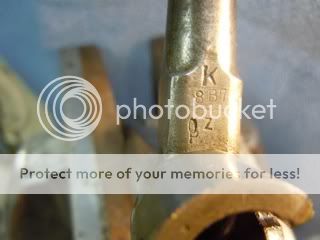 [/img] [img:left] 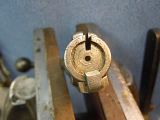 [/img] [img:left]http:// 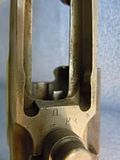 [/img] [img:left] 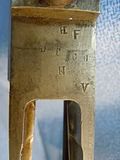 [/img] [img:left] 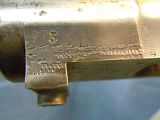 [/img] [img:left]http:// 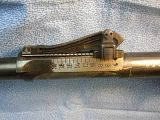 [/img] [img:left]http:// 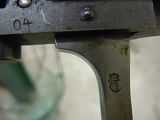 [/img]
|
|
|
|
|
Joined: Jul 2012
Posts: 4,939 Likes: 343
Sidelock
|

Sidelock
Joined: Jul 2012
Posts: 4,939 Likes: 343 |
Otto,
I noticed you posted this rifle on another site and were directed to good info.I didn't call the suggested site up but suspect the rifle was intended for military training use. If it was intended for civilian use,it should have had the normal commercial proofmarks.Such rifles were usually used as single shots and magazine mods wouldn't be needed as long as a "single shot" follower was used.A GEW 98 would have been made by one of the Government arsenals or some company under contract, which should have been shown on the reciever ring together with the date. I don't know why these marks were removed. I will defer to the above info site.
Mike
|
|
|
|
|
Joined: Jun 2011
Posts: 59
Sidelock
|
OP

Sidelock
Joined: Jun 2011
Posts: 59 |
Mike. Thank you for your reply. The feuerbixler site looks as if it is a good one but my German is not up to translating it.
An Internet search suggests that the Wehrmanns Gewehr originated after WW-1, in response to the firearms restrictions contained in treaty of Versailles, and continued to be used until the end of WW-2. They were used primarily for civilian target shooting and generally were set up with a wood loading tray to be used as single shot rifles. It may be that they were all used as single shot rifles and didn't use the magazine when chambered for the 8.15X46R cartridge.
Neither the barrel or action show any evidence of having any markings removed. I guess that the barrel proof marks could be under the rear sight base. Would the #5 on the action side or any of the markings under the action identify its maker?
Otto
|
|
|
|
|
Joined: Jul 2012
Posts: 4,939 Likes: 343
Sidelock
|

Sidelock
Joined: Jul 2012
Posts: 4,939 Likes: 343 |
Otto,
If I remember correctly, you are a machinist and have a pretty good idea what a reciever would look like if the markings were removed.On the other hand, a TP grinder does a pretty good job.It just seems that if it never had the reciever ring markings, it wouldn't have the GEW98 either. It's not likely that proof marks would be under the rear sight, since they had to be visible.If the conversion was done for the Gvt., it wouldn't need commercial proof marks.As I stated on the other Forum, I think the 5 is a new serial number.As usual, I could be wrong.
Mike
|
|
|
|
|
Joined: Jun 2011
Posts: 59
Sidelock
|
OP

Sidelock
Joined: Jun 2011
Posts: 59 |
Mike,
I suspect that your explanation is correct and that the markings were removed at the time of the conversion. I rechecked the action and whoever did the grinding/ stoning did a good job in matching the surface finish of the front and rear rings. I wonder why they felt that it was desirable to remove the markings?
I should correct the statement above regarding the origin of the Wehrmannsgewehr. Jesse Thompson, in Alte Scheibenwaffen Vol #2, gives a good history of its development. Both the rifle and the matches that it was used in clearly precede WW-1.
Otto
|
|
|
|
|
Joined: Jul 2012
Posts: 4,939 Likes: 343
Sidelock
|

Sidelock
Joined: Jul 2012
Posts: 4,939 Likes: 343 |
Otto,
The majority or these rifles were converted after WW1( the Great War),There were also purpose made rifles also.Clearly since the cartridge predated the war, matches could have been held (and likely were)then,as well as training.As Axel explained in the other forum, post WW1-preWW2 was the big demand for training.BTW it is unlikely that the rear ring was ground, since it had no markings.
|
|
|
|
|
Joined: Jun 2011
Posts: 59
Sidelock
|
OP

Sidelock
Joined: Jun 2011
Posts: 59 |
Mike.
I didn't mean to imply that the rear ring area was ground on my rifle. I rechecked the action and noted that it was originally blued, which is still present below the stock line. The surfaces, above the stock line, are in the white. Perhaps left that way after removing the markings and polishing.
Thompson states that the Schutzenbund had the first Wehrmannsgewhr match at the 14th Bundeschiessen, in 1903, which would have been well before WW-1.
Otto
|
|
|
|
|